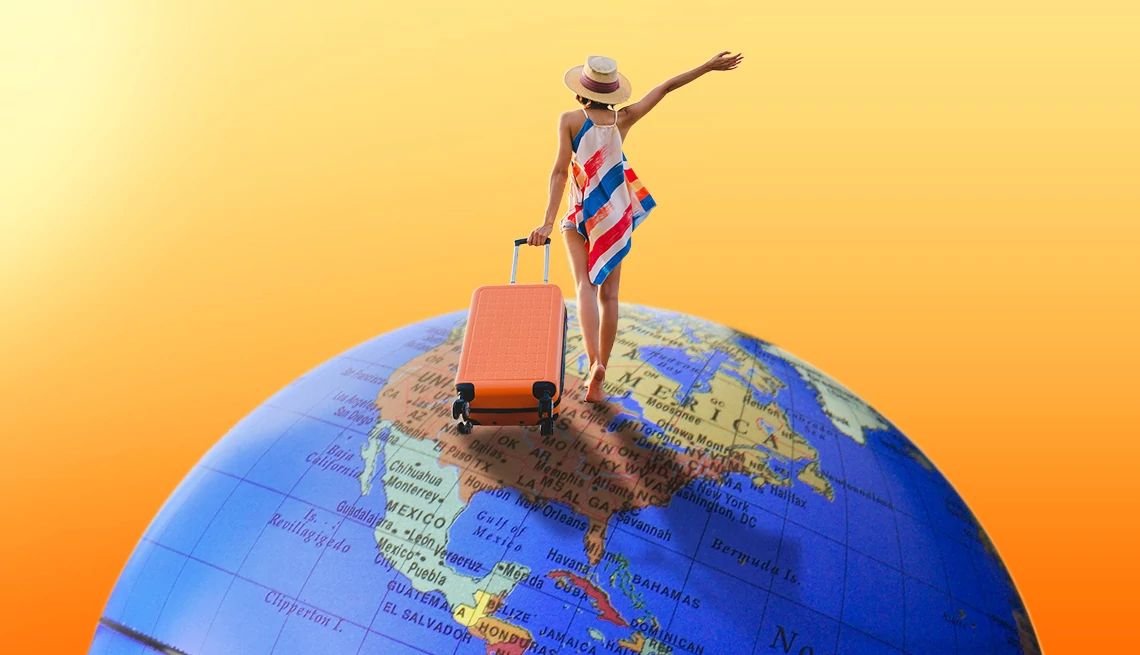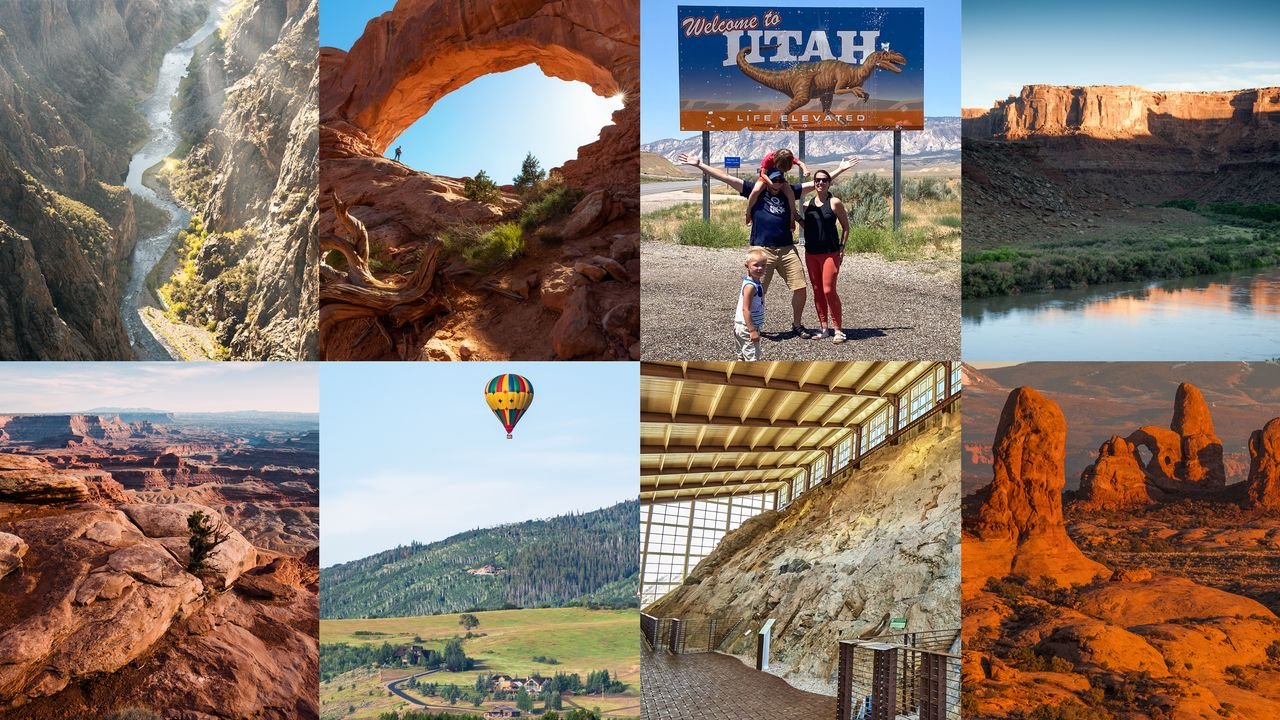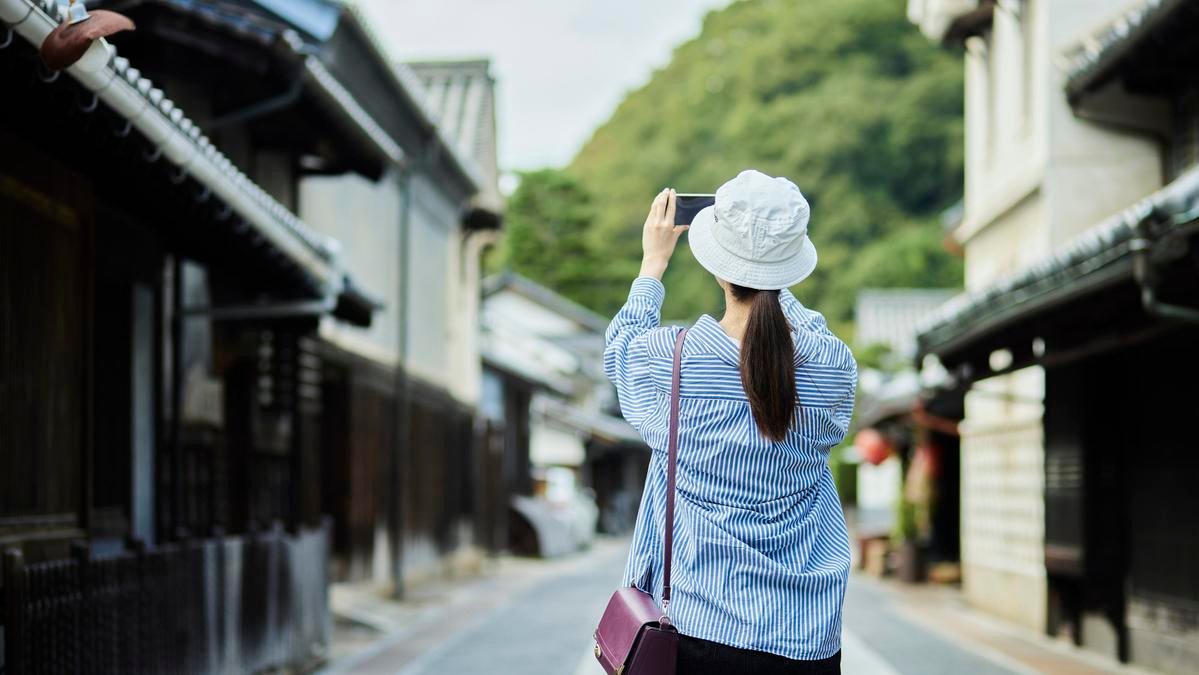Solo Travellers
AARP Smart Guide to Solo Travel

22. Be thoughtful about smartphone use
Speaking of technology, be careful where you use devices like smartphones. Sometimes it’s safer to jot down key phrases, addresses and directions in a paper notebook than to rely solely on mapping and translation apps. Conscientious travelers also leave itineraries with friends and in cloud-storage services such as Dropbox, Google Drive and Microsoft OneDrive, alongside scans of key documents (passport, health insurance card, prescription details, etc.) and a list of good clinics and hospitals in case you need emergency care.
23. Consider accessibility
Solo travel with an impairment or disability can add complications — and possibly some luggage weight for assistive devices like wheelchairs. If traveling in the U.S., make sure to reserve lodging and services that comply with the Americans with Disabilities Act, if needed. This also includes any needs for grab bars, bed shakers, roll-in showers, visual fire alarms, and steps or stools for extra-tall beds. And it never hurts to confirm availability before you arrive, ideally in writing, in case you need to relocate and make a travel insurance claim. The booking tool AccessibleGO offers advice and deals. Wheel the World is another standout, providing comprehensive guides and a catalog of tours with guaranteed accessibility. Agencies such as Sage Traveling also specialize in booking trips like this, while Autism Travel and the Autistic Travel Goddess offer inspiration and options for neurodivergent people.
24. Lock in your transportation
Arrange transport from the station or airport ahead of time so you’re not scrambling to figure out which taxis are legit while bleary from the journey. Your hotel or resort may even offer complimentary transfers — it never hurts to ask. “Think with the safety mindset,” JourneyWoman’s Ray says. “Not just ‘Where are you going?’ but ‘How are you getting there?’ and ‘Where are you going to stay?’ ”
25. Stay safe
Ray says she always carries a door stopper, which adds a cheap and compact layer of in-room security. She also packs a headlamp, even in urban settings, since power outages and natural disasters can happen anywhere. Additionally, whistles, hidden pouches and pickpocket-safe luggage can offer reassurance when you don’t have a pal to watch your back. But keep your “walking around” money and credit cards in two places on your person, so you’ll still have resources if a thief strikes. (Stash the rest in your room’s safe, along with your valuables and a copy of your itinerary, including reservation numbers.) While dining or imbibing, situational awareness can help you retain your possessions and faculties. Take valuables with you when you go to the restroom, and ask waitstaff to keep an eye on your table. For protection against knockout drugs that can be slipped into beverages, look for products such as bracelets, coasters and test strips that can discreetly detect these dangerous substances. Always seek medical attention if you think you’ve been drugged, as it could lead to theft or sexual assault. Finally, the app bSafe offers a “social safety network,” letting friends see your location and receive alerts if you don’t check in at an agreed-upon time. Other app options include Noonlight, which sends an alert to local U.S. authorities at the press of a button, and GeoSure, which helps users evaluate risks. The latter includes information specific to women, as well as people from the BIPOC and LGBTQ+ communities.
26. Guard against online identity theft
While connected to public Wi-Fi on a trip, be sure to use a virtual private network (VPN). This encrypts your web traffic and makes it less risky to conduct digital banking or pay with credit cards online. A VPN can also provide access to streaming sites and social media apps that are censored in some locations. Popular options include Mullvad, IVPN and TunnelBear, but you may already have one installed via antivirus software such as Bitdefender.
Scott Lieberman, founder of TouchdownMoney.com, recommends ExpressVPN for its affordability and set-up ease. Rates start at $8.32 per month and cover up to eight devices. “I can run my phone, tablet and computer all at the same time,” he says.
27. Connect with yourself
“Traveling solo, you’re not lonely,” Ray says. “You’re alone by choice. It’s really powerful.” You decide when to connect with people and design your own experience. That said, all sorts of emotions may surface, especially on a trip that pushes you out of your comfort zone. It’s natural to long for familiar comforts and faraway support networks, but try to stay in the moment. Put down your devices. Leave your room. Even if you don’t paint the town red, your mood may improve by simply reading a book in a convivial café or people-watching on a leisurely stroll.
For the uninitiated, dining without companions often feels fraught. But food and travel writer Naomi Tomky loves the opportunities it provides to see locals going about their everyday lives. “Even in places where dining alone isn’t really part of the culture — or maybe especially there — servers are always willing to talk,” she says. “So you get more of a chance to interact with the world around you than when you’re dining with the people you’re traveling with.”
Still feeling awkward? Try journaling, reading, activity planning, texting family and friends, or sitting at the bar. And consider asking for the bill while you’re still eating, so you can make a quick getaway.
Alternatively, pack a picnic, then soak up the ambience at a park, piazza or beach. Or join a food tour and sample regional specialties, accompanied by a local guide and other travelers.
28. Connect with other travelers
Social media can supply a wealth of advice and opportunities to meet other visitors in an area. Savvy researchers look beyond biggies like Facebook and Instagram, though. Experiment with platforms like Meetup, Tripr, SoloTraveller and Unsettled, a network for global professionals.
Hungry to get off-screen and let serendipity strike in the real world? Try volunteering, taking a class or going on a walking tour. Even offering to take a photo can ignite a conversation with fellow tourists, which could lead to insights and maybe even a little company, if that’s welcome.
29. Enjoy the opportunity for romance
Singles tours can be a good way to strike up a spark — or avoid feeling like an extra wheel among couples and families. But a OnePoll study for Exodus Travels found that almost a quarter of Americans met their spouses while traveling, and a third have enjoyed romantic flings while traveling. Exodus Travels has a wide range of solo-only trips, as do brands like Encounter Travel and Cox & Kings, not to mention the similarly named, but distinct, Solo Female Travelers and The Solo Female Traveler Network. And Norwegian Cruise Line pioneered staterooms and lounge areas specifically for singles.
30. Commune with locals
Reluctant to strike up conversations at a café counter or farmers market? You can still meet people through programs like Eatwith and BonAppetour, which pair travelers and home chefs. Meanwhile, the nonprofit International Greeter Association hosts free walks for individuals and groups of up to six people in over 150 destinations, including Algeria, Ghana, Japan and the United Kingdom. “I absolutely love free walking tours,” says Lieberman, who has traveled to 25 countries, mostly using miles and points. “They’re a fantastic way to explore with a trusted guide, learn history and culture, and meet new people.” Often he suggests the group grab a bite after a tour concludes.
Dynamite Travel’s Haynes’ top tip for travelers of color: “See if there are any BIPOC expat groups, as they can serve as great contacts and guides.”
31. Take breathers
Solo travel can be challenging at times. Be gentle with yourself and leave space to recharge your batteries as needed. “When you’re solo and you’re always planning a step ahead, you get tired after a while,” author Javins says. “I always build in downtime, whether it’s on a week’s trip or a year’s trip.” This allows her to relax and wander a bit, opening the door to unexpected adventures. “I’ve stumbled onto many priceless moments this way — fortune tellers in the park, shrines of ceramic zebras, comics stores featuring quirky performances, craftspeople hard at work in a public plaza, new cafés not even online yet,” she says.
32. Rest and recharge
Not every journey needs to be a whirlwind. Solo travel opens doors to the restorative self-care many people crave, and as a recent Gallup poll reports, almost half of Americans frequently experience stress now. Small wonder that 84 percent of travelers plan to spend more money to unwind away from home, according to American Express. Wellness offerings are trending, from spas, to digital detoxes, to animal-assisted therapeutic retreats and even “sleep tourism,” which supplies amenities and concierges to encourage sweet dreams. (Discover more AARP tips for sleeping better while traveling.) Moon Guides author Scallon has shifted more toward this introspective approach after a youth full of “jumping onstage during hostel game nights or closing down the bar with strangers I’d never see again.” Now she prefers low-pressure group activities like walking tours and the theater. “I tend to book solo trips without expecting a ton of interaction, though I am always thrilled if it happens naturally,” she says.
Solo Travellers
Renting a Camper Van for a Road Trip of Stargazing, Cook Outs, and Red Rock Hikes

For Jo Piazza and Nick Aster, a camper van trip through the national parks of Colorado and Utah wasn’t just a summer escape—it was a way to reconnect with the adventures they loved pre-kids. “It was time for a trip out west,” Jo says. “We’d visited a lot of these national parks when we lived in San Francisco, but now it was about showing our kids—Charlie, 5, and Beatrix, 3—what makes these places so special.”
The couple, who live in Philadelphia and were expecting their third child at the time (Eliza, now born), mapped out a 10-day loop that started and ended in Denver. Along the way, they visited Rocky Mountain National Park, Steamboat Springs, Dinosaur National Monument, Moab, Arches, Canyonlands, Black Canyon of the Gunnison, and Breckenridge. “It was a bit of an epic romp,” Jo laughs. Here’s how they spent their family vacation—and how much it cost.
Why rent a camper van?
Pregnant, outdoorsy, and realistic about the physical demands of camping with two small kids, Jo knew she needed more than a tent. “Sleeping on the ground just wasn’t going to cut it,” she says. “A van gave me a good place to sleep—and full disclosure, Nick often slept out in the tent with the kids to give me a bit of luxury.”
They rented their “cabin camper” through Outdoorsy—a fully tricked-out truck with a massive cap in the back that felt like a log cabin on wheels. “People commented on it everywhere we went,” Jo says. “We’d get high fives, people asking to take pictures. At one point, someone said, ‘Hey man, we saw you in Canyonlands two days ago! That thing is awesome.”
Planning a flexible route around national parks
Unlike their usual meticulously planned vacations, this one was intentionally open-ended. “We had a general loop in mind,” Jo explains. “We knew we wanted to hit Rocky Mountain right away since it’s so close to the airport, and we knew Charlie would go bananas for Dinosaur. But the rest we figured out as we went. That’s the beauty of traveling by van—you don’t need to lock in hotels every night.”
This flexibility came in handy during a July heatwave in Moab. “We broke up the camping with a stay at the super-unhip Marriott,” Jo says. “It had a fake red rock pool and a mini water park. It flew in the face of the National Park ethos, but with 100-degree heat and two little kids, we just leaned in. They loved it.”
Top highlights for parents and kids
The kids’ favorite moments weren’t always the ones Jo and Nick would’ve picked, but they rolled with it. “They’re still talking about the pool in Moab and the fossil quarry at Dinosaur National Monument,” Jo says. “Also, they were weirdly into how much attention the van got.”
Solo Travellers
A pristine alternative to the Channel: long-distance swimming in Croatia | Swimming holidays

From the port of Stari Grad, one of the oldest towns in Europe, we slip into the water and begin swimming out of the harbour, past the church of Saint Jerome and around a pine-clad headland to a nearby bay on Hvar’s northern coast. We emerge like an amphibious invasion force – about 160 swimmers, making our way to the hotel pool bar where drinks await. So far, so civilised. But this is only a warm-up …
On 24 August 1875, Captain Matthew Webb became the first person to swim the Channel, slathered in animal fat to fend off the cold. At the time, it was heralded as a feat of near-superhuman endurance. One hundred and fifty years later, I signed up for a modern take on the 33.3km (21-mile) swim (the shortest distance across the Channel, although Webb was blown off course and ended up swimming something like 63km). This Croatian adaptation involves swimming between islands off the Dalmatian coast, is split across four days and includes a welcoming hotel (the three-star Places Hvar by Valamar) to recuperate in at the end of each day. And thankfully, neoprene has replaced tallow.
The trip is run by UltraSwim 33.3, a new company named after the Channel stretch, offering multiday swim challenges in spectacular locations – Croatia, Montenegro, Greece and Switzerland – with an emphasis on comfort and support.
“The Channel is the Everest of swims,” says Mark Turner, UltraSwim 33.3’s co-founder. “But the window to do it is short, it’s expensive, and – let’s be honest – not a particularly appetising stretch of water. With us, you get the same distance in beautiful surroundings, without having to rough it.”
I’ve been on swimming holidays before with companies such as SwimTrek and Strel Swimming Adventures, and I’ve swum up to 5km a day, but with breaks for drinks, lunch and soaking up the sun. UltraSwim takes a more structured, challenge-oriented approach. Each day begins early – we are in the water by 8am, before boat traffic picks up – and swimmers go up to 12km without pausing for more than a quick pit stop.
A detailed training plan landed in my inbox after I’d signed up and I quickly realised I wasn’t fit enough, or perhaps was mentally unprepared, for the full 33.3km swim. Thankfully, there were two shorter options available: the 11.1km “Discovery” and the 22.2km “Build” packages, both nodding to the Channel challenge.
On the first day, we set off from a jetty close to the hotel and, within minutes, I spot an octopus waving lazily from its underwater garden. I’d love to linger, but time and tide wait for no swimmer. Several kilometres later, I stumble out of the water on to the beach at Uvala Veli Dolac, exhausted but elated. We are greeted by a spread of high-energy snacks and a lot of talk about carb loading – a far cry from Webb’s fuelling strategy of beer, brandy and beef tea.
According to the Channel Swimming and Piloting Federation, Webb’s swim has now been repeated 3,250 times. The endurance trend is visible in other areas, too, from ultramarathons and multiday cycling tours to open-water relays. Increasingly, it seems, people want to return from holiday not rested but with a sense of accomplishment.
On days two and three, we tackle some proper “Channel” swims across 2-3km stretches of open water, from the Kabal headland to Stiniva beach, and Cape Pelegrin to Palmižana. On the map these are marked as ferry routes, but the views I enjoyed from the deck when I arrived in Hvar – all pine-studded islands and turquoise waters – feel very different when in the water: a distant headland to aim for, choppy seas and the occasional jellyfish.
I’ve never attempted anything quite like this before, and it’s not a challenge I relish. But I put my head down and try not to think about how far I am from dry land. There’s a GPS tracker in my tow float, kayakers on either side, and a clear course to follow – thankfully more straightforward than the one Webb swam, where strong tides dragged him way off course, turning a 21-mile crossing into a 39-mile slog.
As I swim for just over two hours, I find it hard to fathom how he kept going for nearly 22. I distract myself by recalling snapshots from the trip: the 16th-century Tvrdalj Castle in Stari Grad, where the poet Petar Hektorović once lived; and the Diocletian’s Palace in Split, where I spent a relaxed day exploring its golden alleyways and multiple layers of history, from the Roman and Venetian empires to Yugoslavia and the past 30 years of an independent Croatia.
after newsletter promotion
Once we complete the open-water channels, we circle back into gentler waters around the Pakleni archipelago, covered with the pine, wild rosemary and lavender that flavours the local honey. The name “Pakleni” comes from paklina, a pine resin once used for boat building.
Our 160-strong group is made up of swimmers from across the globe, from as far and wide as Brazil, Dubai and Australia. There are almost equal numbers of men and women, with ages ranging from 20 to 73. Some are training for an actual Channel crossing, others just want a challenge.
“It’s type-two fun,” Joe from Dublin tells me. “The kind that’s only fun after it’s over.” I think I’m more of a type-one (enjoying things at the time) person, but I do enjoy swimming across the sun-dappled kelp forests, the calm rhythm of stroke after stroke, and the quiet pride of finishing each day’s swim.
“We find that people surprise themselves,” says Turner. “The way we structure it with pacing and support, swimmers who’ve never gone beyond a few kilometres leave feeling they’ve done something extraordinary.”
Non-swimming partners aren’t left out. They can follow by boat, cheer from the shore or explore Stari Grad and Hvar. One non-swimmer told me he’d racked up a fair few kilometres on an ebike, visiting lavender farms, vineyards and sleepy fishing villages. “Other than a brief dip, swimming’s not really my thing,” he shrugged. “But my girlfriend loves it, so we’re both happy.”
On the final day, we aim for the bell tower of St Stephen’s Cathedral and swim the last few kilometres into Hvar’s harbour, emerging beside the Venetian arsenal to a glass of champagne, handed to us after we pass the finishing posts, to bemused stares from regular tourists.
A few hours later, after a soothing massage in a spa hotel, I’m wandering Hvar’s labyrinthine streets, stopping to enjoy fresh fish and Croatian wine, with no more talk of carb loading. I didn’t win anything. I didn’t swim the full 33.3km. But I completed the 11.1km course and tasted something akin to what Captain Webb must have felt: the slow, steady triumph of body over distance, albeit without the freezing water of the Channel, or the beef tea. And, instead of the pale grey cliffs of Cap Gris-Nez to signal the end, the golden limestone of Hvar.
The trip was provided by UltraSwim 33.3. Packages from €1,800pp for four nights (in a group of four, the fourth swimmer goes half-price), including hotel accommodation, breakfasts, post-swim lunches and guided swims. The next Croatia dates are in 2026 but places are available this year on trips to Montenegro, Greece and Switzerland
Solo Travellers
Going solo in Japan … 7 reasons why it’s a top spot

Ohitorisama. This Japanese word means “party for one” – a celebration of being solo.
And, with the rise and rise of the solo and single traveller, the Japan National Tourism Organisation sees the synergies.
For it is perfectly acceptable – normal – to venture alone into standing sushi bars, stay in small single rooms in capsule hotels and even sing “karaoke for one”.
A JNTO spokesperson says: “The concept of spending time alone has been somewhat of a cultural evolution in Japan, spurred by younger generations and a nation with one of the world’s highest rates of single-dweller households.
“This is the ultimate destination for independent travellers keen to embrace the Japanese version of ‘me time’.
“For solo travellers ready to combine cultural immersion and superb scenery with a journey of self-discovery, personal freedom and the chance to pursue their passions, Japan ticks all the boxes.”
And the JNTO team has identified these seven reasons that Japan is ideal for solo travellers, in their own words …
It’s super safe
Japan consistently ranks among the top 10 countries in the world for safety, and with a lively entertainment scene and fantastic public transport, you won’t be alone exploring after dark or travelling by train.
Cute capsule hotels
Don’t need much space? Just somewhere clean, compact and convenient to lay your head? Then check out one of Japan’s many capsule hotels, which often also include communal spaces to connect with fellow solo travellers, speedy wi-fi, luggage storage spaces and tasty snacks. There are also female-only capsule hotels or female-only floors in both capsule and more conventional hotels for women travelling independently.
Adventures after dark
From tachinomi (standing bars) serving local beer, sake and affordable snacks, to the rise of single-person karaoke parlours such as 1Kara in response to growing demand from those who want to belt out a tune or two on their own terms in the privacy of their own booth, Japan’s nightlife offers diverse options for individual travellers. independent travellers.
Memorable meals
There’s no stigma attached to dining solo in Japan, in fact, there are style of dining specifically designed for it. From standing sushi bars, known as tachigui, where solo diners can enjoy authentic, affordable sushi to ramen restaurants where diners sit side-by-side between partitions watching the chefs in action, there’s no need to miss out on a magnificent meal if you’re travelling solo. Even yakiniku restaurants have evolved to welcome solo diners by adding personal grills at the counter to cook your own sizzling cuts, whilst conveyor belt venues make it easy to mingle with fellow diners.
Slick public transport
Japan’s train network is second to none: clean, reliable and on time, literally down to the second. You can easily navigate to the right station entrance with Google Maps and pay using your phone by downloading the Welcome Suica Mobile app (iPhone only).
Cultural experiences
From art galleries and museums to temples and creative classes in everything from calligraphy and lacquerware to silk painting and sushi-making, there are endless cultural and historic activities to enjoy as a solo traveller, and many are free.
Wellness for one
Onsen bathing is delightful as a solo activity, providing an opportunity to enjoy the serenity and focus on self-care and wellness. Most onsen offer single-sex bathing options, and some ryokan and onsen towns also allow bathers to book a kashikiri buro (private bath) for the ultimate solo soak. If you have a tattoo, no worries, there are tattoo friendly onsens too.
japan.travel/en/au/
-

 Brand Stories2 weeks ago
Brand Stories2 weeks agoBloom Hotels: A Modern Vision of Hospitality Redefining Travel
-

 Brand Stories1 week ago
Brand Stories1 week agoCheQin.ai sets a new standard for hotel booking with its AI capabilities: empowering travellers to bargain, choose the best, and book with clarity.
-

 Destinations & Things To Do2 weeks ago
Destinations & Things To Do2 weeks agoUntouched Destinations: Stunning Hidden Gems You Must Visit
-

 Destinations & Things To Do1 week ago
Destinations & Things To Do1 week agoThis Hidden Beach in India Glows at Night-But Only in One Secret Season
-

 AI in Travel2 weeks ago
AI in Travel2 weeks agoAI Travel Revolution: Must-Have Guide to the Best Experience
-

 Brand Stories4 weeks ago
Brand Stories4 weeks agoVoice AI Startup ElevenLabs Plans to Add Hubs Around the World
-

 Brand Stories3 weeks ago
Brand Stories3 weeks agoHow Elon Musk’s rogue Grok chatbot became a cautionary AI tale
-

 Asia Travel Pulse4 weeks ago
Asia Travel Pulse4 weeks agoLooking For Adventure In Asia? Here Are 7 Epic Destinations You Need To Experience At Least Once – Zee News
-

 AI in Travel4 weeks ago
AI in Travel4 weeks ago‘Will AI take my job?’ A trip to a Beijing fortune-telling bar to see what lies ahead | China
-

 Brand Stories4 weeks ago
Brand Stories4 weeks agoChatGPT — the last of the great romantics













You must be logged in to post a comment Login